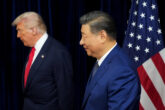February 02, 2024
Mind the Gap: America Needs an Office of Technology Net Assessment
Just over 50 years ago, Secretary of Defense James Schlesinger stood up an independent body within the Pentagon called the Office of Net Assessment. It was 1973, and the Cold War had entered a period of detente. The previous year, President Nixon had made a historic visit to Moscow, and the two superpowers signed the Strategic Arms Limitation Talks (SALT) I treaty to reduce their strategic nuclear arsenals. Amid the shifting geopolitical landscape, the ONA was empowered to step back, look ahead, and soberly assess the U.S. military’s “net” strengths vis-a-vis its competitors. A half-century after its founding, the ONA has its admirers and its detractors, but few would dispute the value of creating space within government for long-term, strategic analysis.
Policymakers have begun to recognize the need for this type of long-term technology analysis.
Today, there is a grave and growing gap in Washington’s long-term analysis: technology competition. Although the ONA has done laudable analyses of key technology trends, its focus on how those trends specifically affect the U.S. military misses the ever-expanding role technology plays in national and economic security. And within the ONA, technology competes with many other analytic priorities, even as technology leadership becomes more central to national power and the U.S.-China strategic competition in particular.
The analytic gap within the U.S. government for long-term technology trends is not a matter of speculation. It is painfully clear from three recent examples: semiconductors, 5G networks, and biotechnology.
Read the full article from Lawfare.
More from CNAS
-
Transatlantic Security / Technology & National Security
Look Before We Leap on Artificial IntelligenceThis article was originally published on The Dispatch. A debate about the role that artificial intelligence should and will play in society, and how it will affect humanity fo...
By Jon B. Wolfsthal
-
Technology & National Security
Caleb Withers on the Cybersecurity Frontier in the Age of AICaleb Withers, research associate at the Center for a New American Security, joins Kevin Frazier, the AI Innovation and Law Fellow at the University of Texas School of Law and...
By Caleb Withers
-
Technology & National Security
Prepared, Not ParalyzedExecutive Summary The Trump administration has embraced a pro-innovation approach to artificial intelligence (AI) policy. Its AI Action Plan, released July 2025, underscores t...
By Janet Egan, Spencer Michaels & Caleb Withers
-
Indo-Pacific Security / Technology & National Security
Sharper: Tech + ChinaRecent talks between President Donald Trump and Chinese Communist Party General Secretary Xi Jinping placed a spotlight on emerging technologies, from high-end chips to minera...
By Charles Horn & Sevi Silvia




